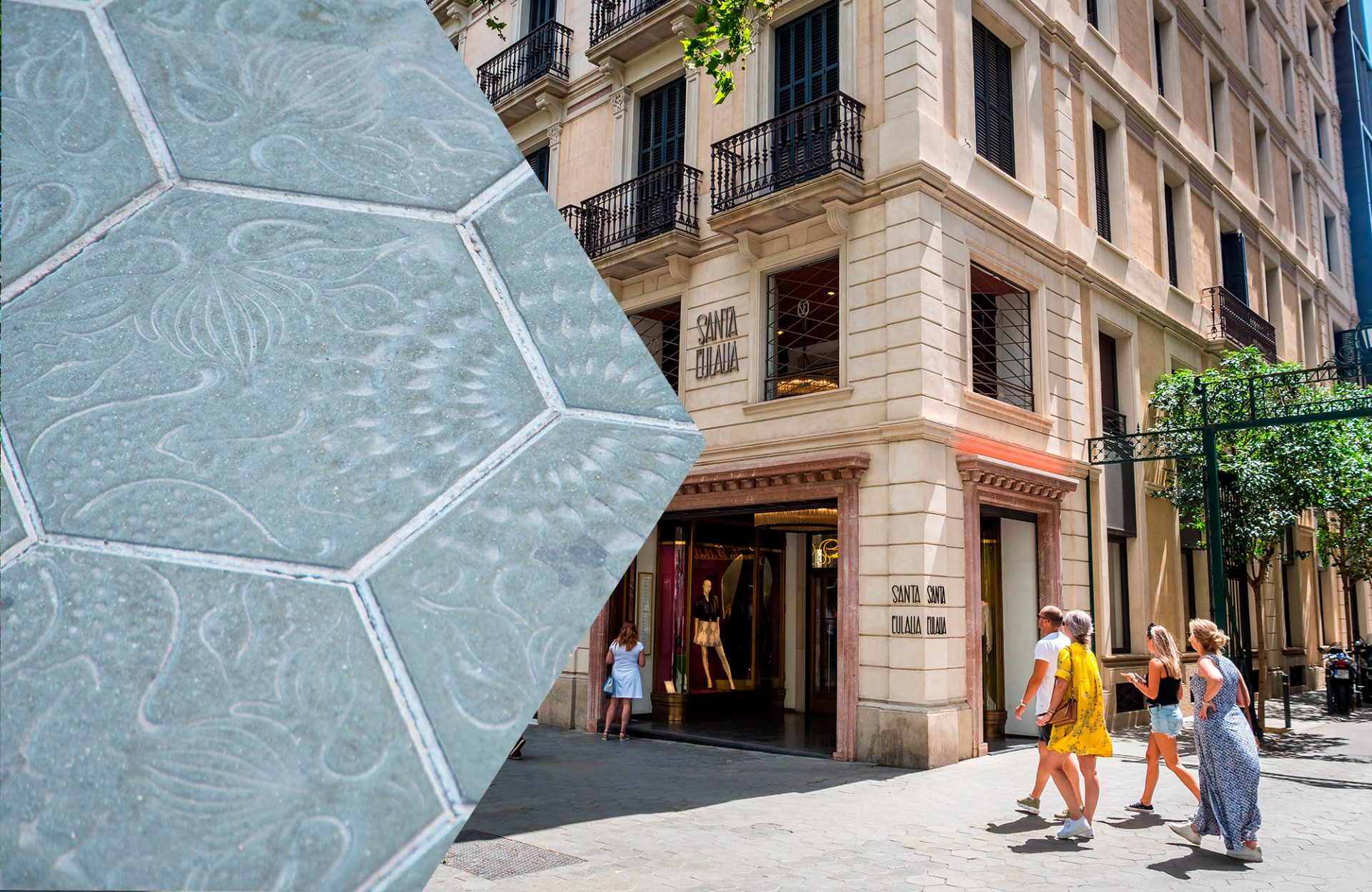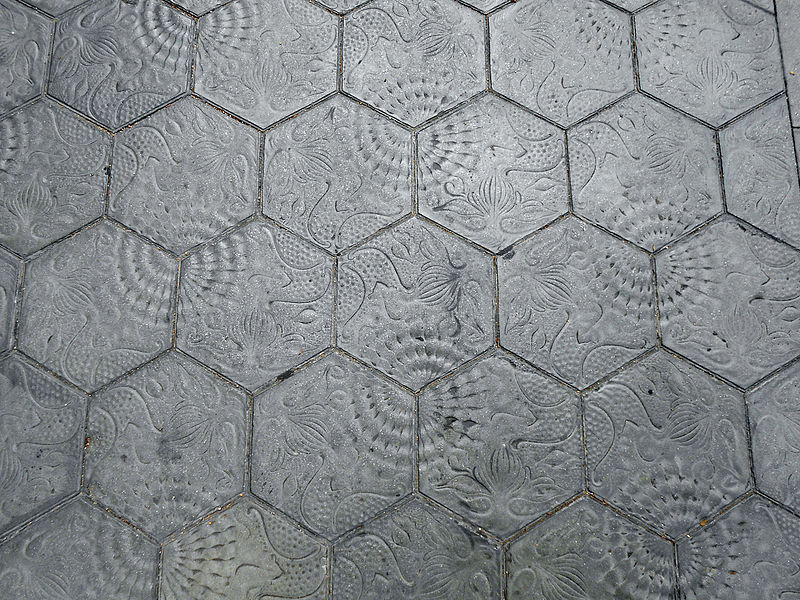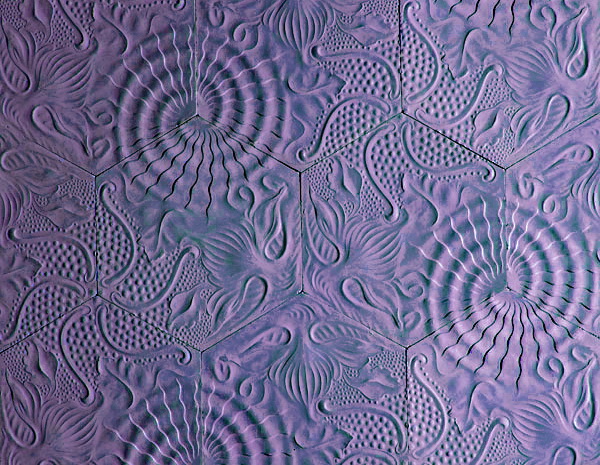This website uses cookies so that we can provide you with the best user experience possible. Cookie information is stored in your browser and performs functions such as recognising you when you return to our website and helping our team to understand which sections of the website you find most interesting and useful.
Gaudí panot: walk on a work of art

On Passeig de Gràcia, it is advisable to walk around looking like the sky or the ground. In the latter case, you can admire one of the most characteristic urban furniture elements in Barcelona: the so-called Gaudí panot, which covers the entire Passeig.

Designed by Antoni Gaudí in 1904, the Gaudí panot is a pavement that has become his most famous non-architectural creation. It is a hexagonal panot -an innovative feature, as it broke with the tradition of square tile- with three different shapes inspired by three marine elements: a starfish, some algae of the genus sargassum and a snail’s fossil sea of the Ammonite class; the complete drawing can only be seen with seven tiles and is a sign of the close relationship between Gaudí’s work and nature. Another peculiarity is that it has no different colors but is monochromatic; the diversity of colors is replaced by the relief, which provides lights and shadows.
Gaudí designed the panot to be used in the Casa Batlló, but finally, due to delays in its production, this idea was discarded and it was used in La Pedrera.

In 1971 a radical change took place on the sidewalks of Passeig de Gràcia, which expanded. These were then covered by the Gaudí panot, with a color between green and blue. In 1997, with a new overhaul of the Passeig, a new design of the Gaudí panot was made in a smaller size and in grey color, and with the design invested.

At present, the Gaudí panot is exposed to MoMA in New York as the first product considered industrial design. In addition to Passeig de Gràcia, it can also be found in the vicinity of the Plaza de la Constitución in the Andalusian city of Jaén.

